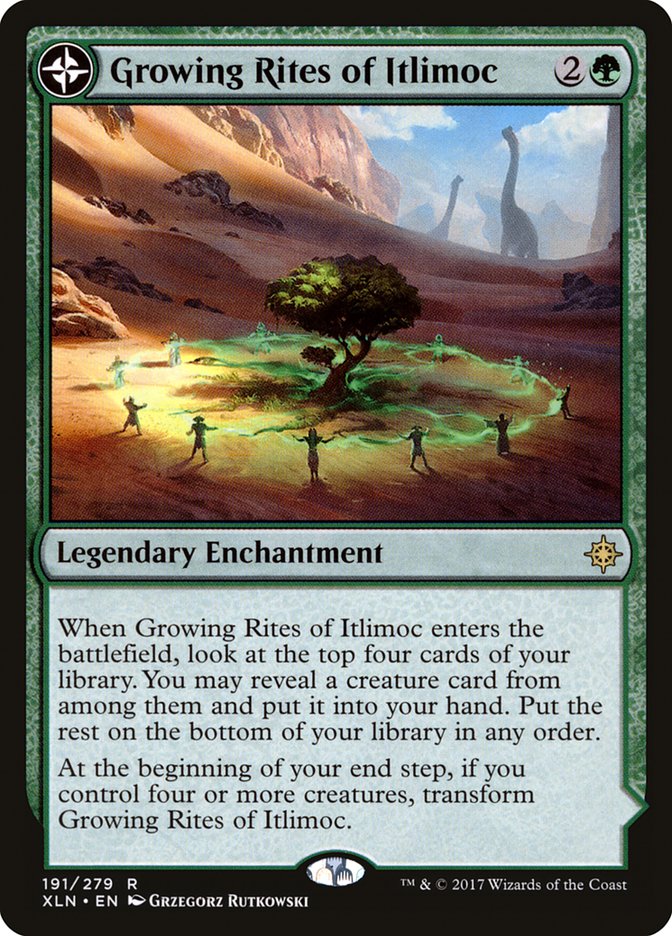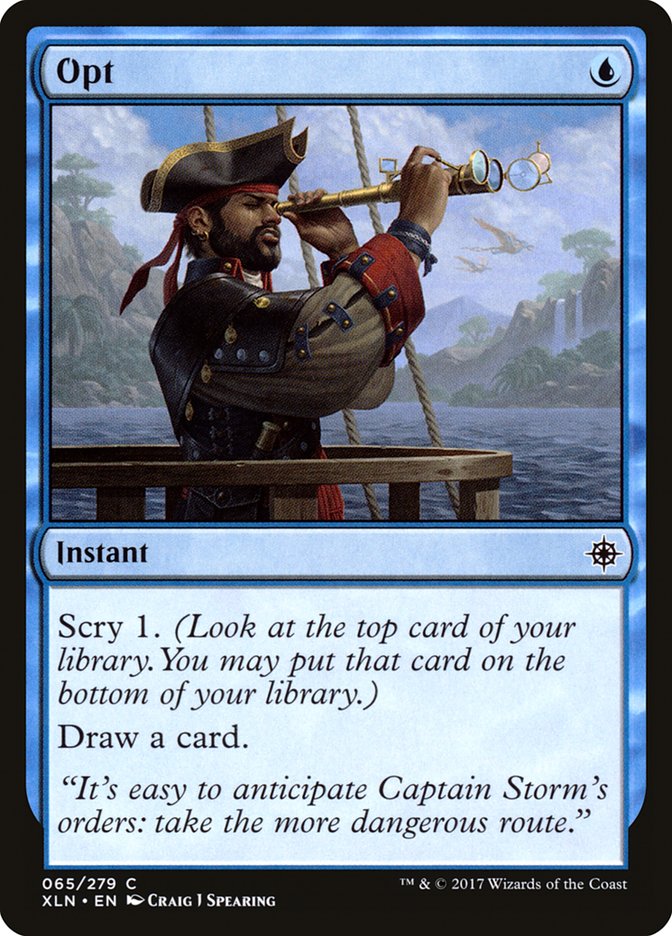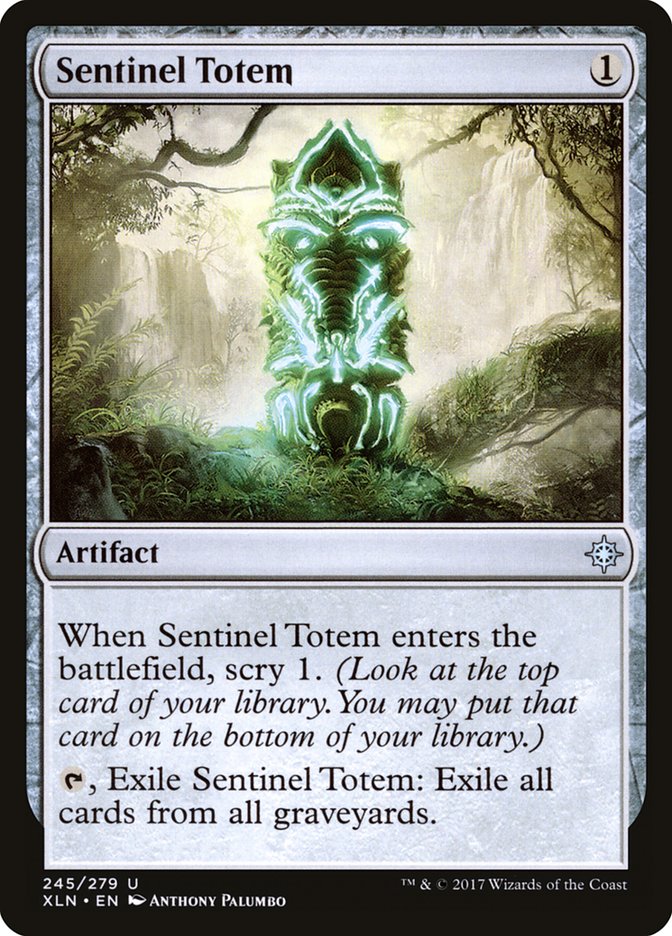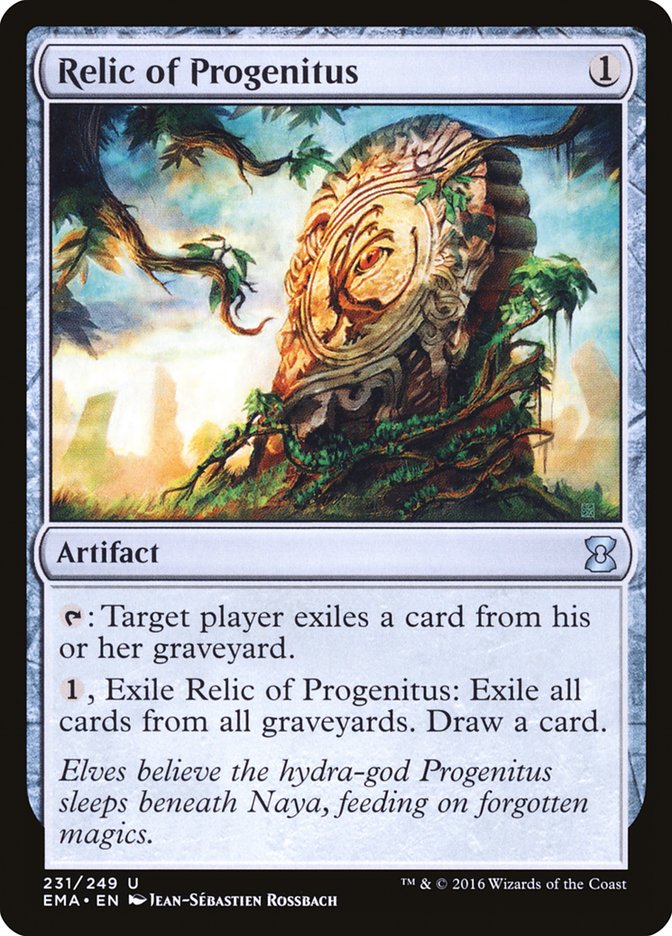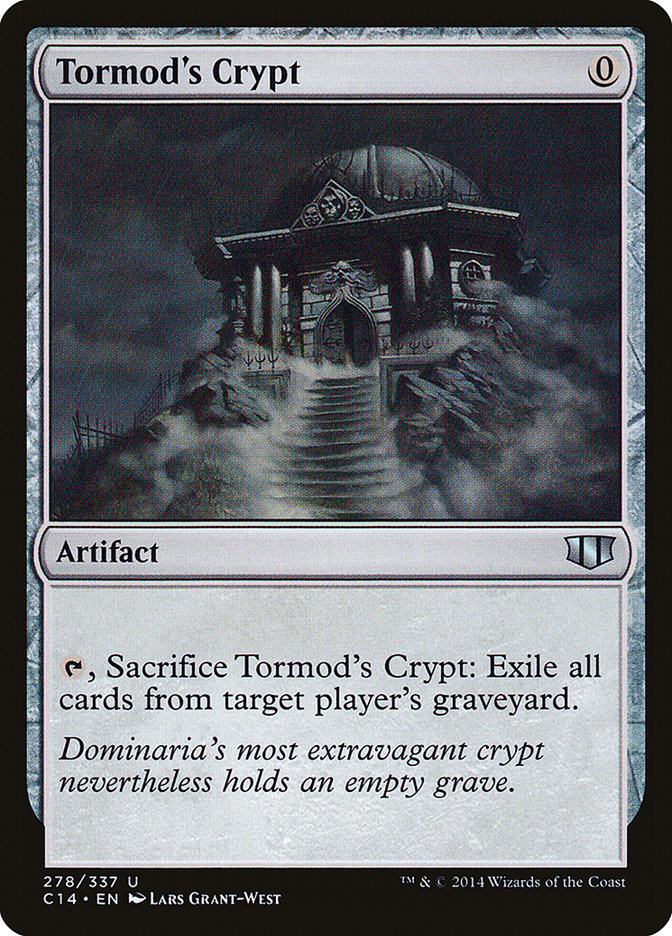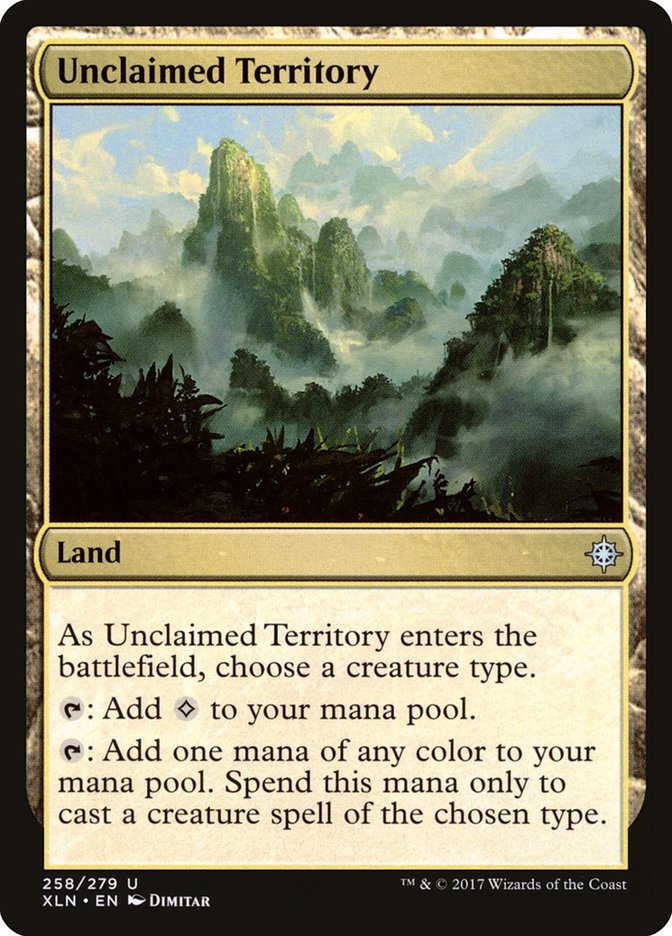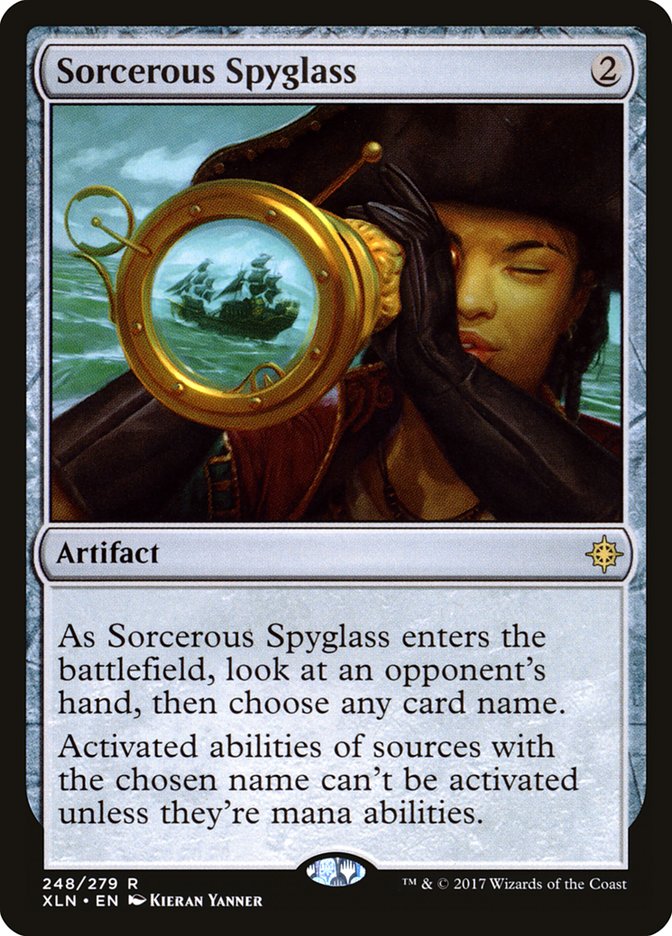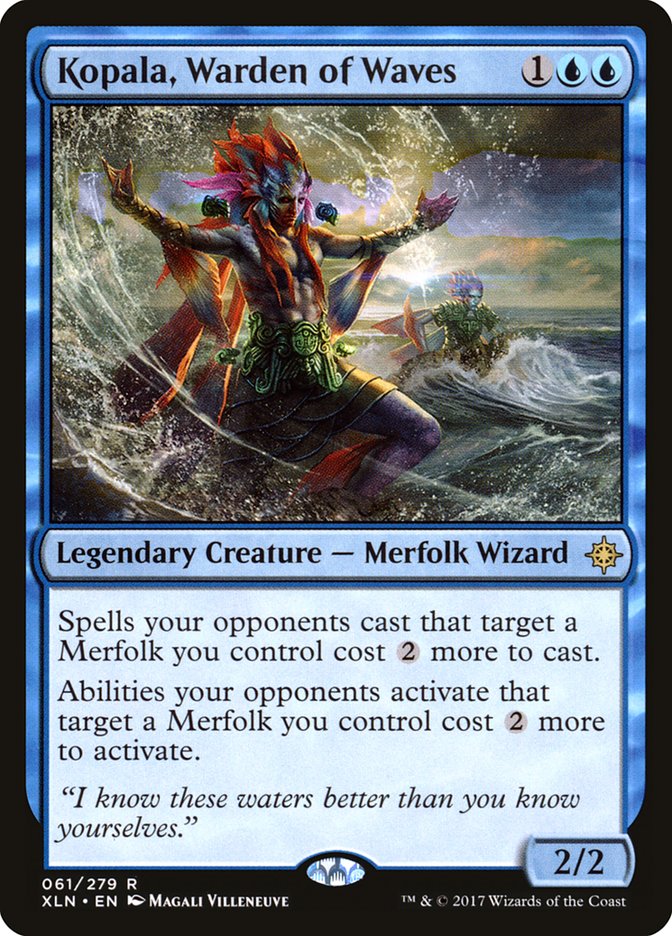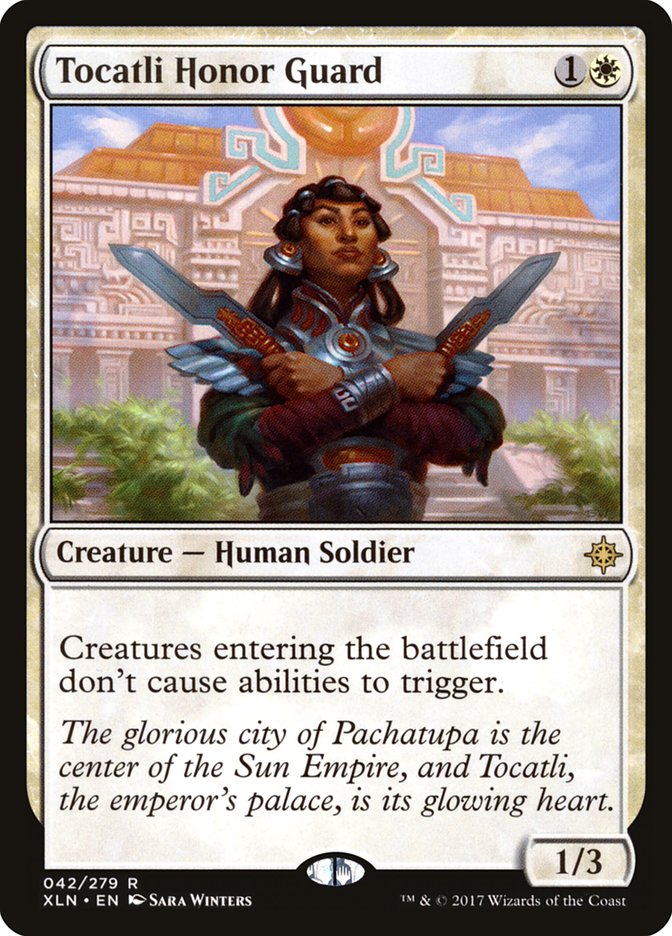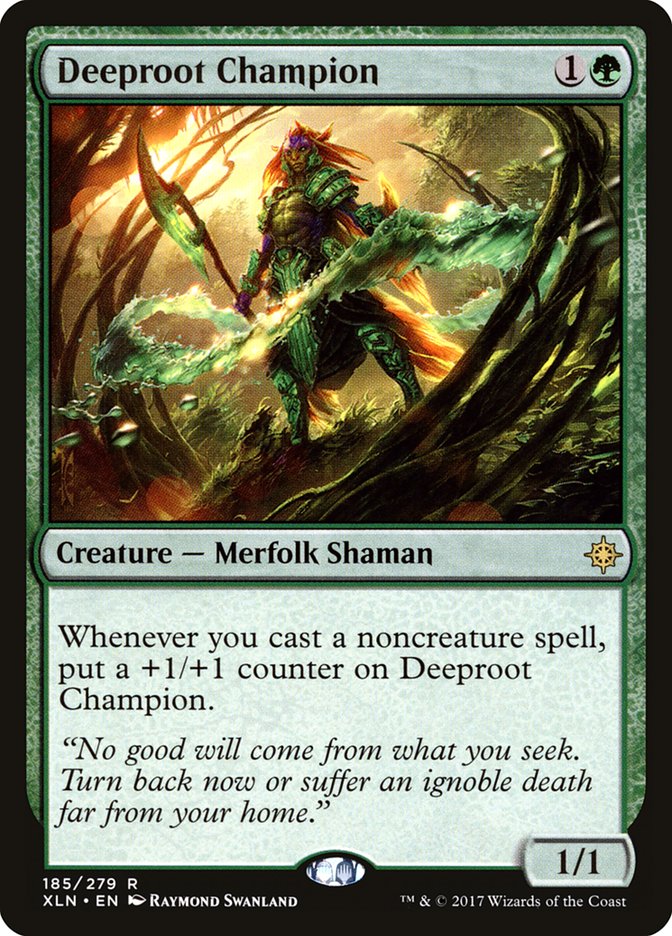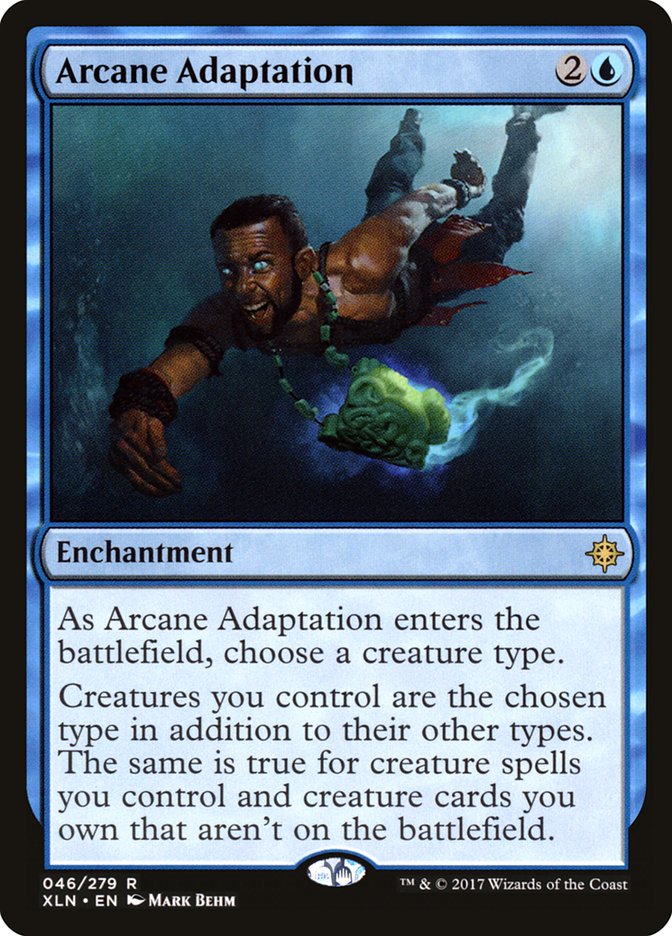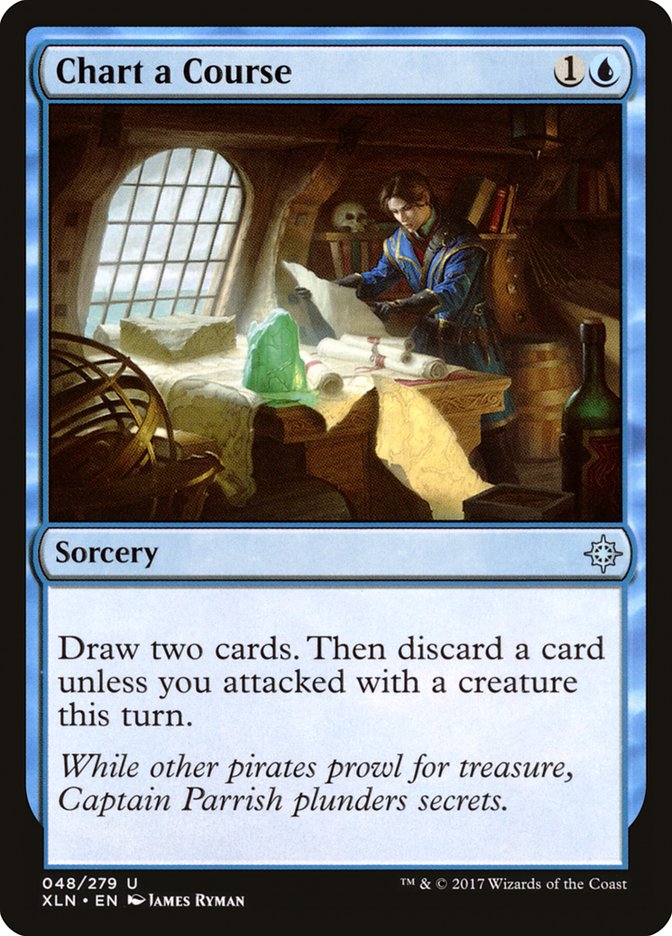It’s finally preview season!
Well, previews for Ixalan started a little while ago, but I’ve been drinking a bit too much of the U/R Gifts Storm Kool-Aid to pay too much attention to the new cards. This weekend, however, I won’t be able to attend #SCGKY‘s Modern event. This is bad, because I’d love to play more Storm, but great, because I get some time to evaluate the cards from Ixalan and figure out the best way to piece them into Modern and Legacy.
When Hour of Devastation was released a few months ago, I wrote an article detailing the process I used to evaluate cards, and little has changed in the meantime. Rather than rehash said article and give everyone the same information, I’m going to categorize some cards from the Ixalan and talk about what they’ll be doing to Magic’s Eternal scene in just a few weeks.
The Overrated Stuff
Let’s go ahead and get this one out of the way. I may end up eating my words, but it’s astounding that this card was so popular that it was briefly on the front page of Reddit. For Commander, this card is great! Otherwise, the upside just isn’t there.
In Modern, this card is fighting for some of the more competitive slots in the go-wide creature decks, and it doesn’t stack up for a number of reasons, the primary of those being that it doesn’t immediately impact the battlefield upon its resolution. For this card to be good, it has to jump through a lot of hoops.
- The deck must play enough creatures for there to be one in the top four cards of one’s library roughly 70% of the time.
- The creatures must be cheap enough that deploying four of them isn’t an issue.
- The creatures need to remain on the battlefield for an entire turn in order to make use of the mana that Itlimoc, Cradle of the Sun grants, or…
- The deck must be able to use the mana from Itlimoc, Cradle of the Sun on the opponent’s turn (before they have a chance to deal with the creatures enabling the land).
- There has to be a payoff card powerful enough to warrant jumping through all of these hoops and making the requisite deckbuilding sacrifices necessary to make the card work.
All of this is to say that the card is very powerful, and if it does end up having a home, it will be the best card in the deck, but at this point I’m not a believer that the deck exists. It’s much easier to assemble a combo with Collected Company or Natural Order than it is to meet all of the requirements that Growing Rites of Itlimoc demands of its caster.
All right, before scrolling down to the comments to tell me that Opt is the best Modern card printed since Fatal Push, hear me out.
In combo decks, Opt provides less card selection than Serum Visions and less-informed selection than Sleight of Hand.
Opt will not be replacing Serum Visions any time soon. If anything, it will be the Ponder to Serum Visions’s Brainstorm, both seeing playing together rather than being separated. Opt is better in flash-oriented strategies, but the fewer cards being seen over the course of each game does end up making a pretty enormous difference.
Opt may end up replacing Sleight of Hand in the lists of Grixis Death’s Shadow that cheat on their land count a bit. That deck cares about playing on the opponent’s turn and wants to be sure that it is able to represent a wide array of spells at each phase of the game.
Past that? Opt isn’t rocking the boat too much. What Opt is going to do in the format is provide another cantrip that helps create a layer of redundancy in blue decks. If Opt ends up contributing to a takeover of Modern, it will be alongside Serum Visions and Sleight of Hand, not in lieu of them.
The Sidesteps and Slight Downgrades
So this card isn’t necessarily going to overthrow Modern, but it isn’t nearly as bad as the “just a bad Relic of Progenitus” label that it’s been given. This card is much closer to the halfway point between Relic of Progenitus and Tormod’s Crypt.
The draw to Relic of Progenitus is that it replaces itself, but at the downside of costing two mana to nuke both players’ graveyards. Tormod’s Crypt is incredibly efficient, but it doesn’t do anything other than hit a single player’s graveyard. Enter Sentinel Totem.
Sentinel Totem has the benefit of providing an advantage (albeit in the form of selection, rather than raw cards), while also not requiring its controller to hold up a mana every turn. One of the easiest ways for graveyard decks to win through a Relic of Progenitus is to wait for the Relic’s controller to tap low for a turn and use that as a pocket to have an unanswered turn of graveyard-based tomfoolery.
It isn’t incredibly likely that this card will end up completely replacing Relic of Progenitus, but I’m absolutely in the “try a card before making final decisions” camp, and Sentinel Totem seems close enough that it could be an upgrade in a handful of decks.
To address the elephant in the room: this is a strictly worse Cavern of Souls, for all intents and purposes. The reason that this card may end up seeing play anyway is that it isn’t legal to play five copies of Cavern of Souls in one’s deck. The greedier multicolor tribal decks that overload on Cavern of Souls for mana fixing more than the uncounterable clause will likely end up playing this card just to do a poor Cavern impression.
This brushes a bit on why it isn’t always useful to immediately dismiss cards that are inferior versions of cards that already see play. Similar to the point I brought up with Opt, don’t think replacement; think redundancy. There are several decks in Modern that push their manabases to the limit and benefit from tribal synergies, so is it really that crazy to imagine either of these decks playing a nonzero number of Unclaimed Territory?
Creatures (31)
- 4 Noble Hierarch
- 4 Champion of the Parish
- 3 Avacyn's Pilgrim
- 1 Mayor of Avabruck
- 4 Thalia, Guardian of Thraben
- 2 Sin Collector
- 1 Anafenza, the Foremost
- 1 Abzan Falconer
- 4 Reflector Mage
- 4 Thalia's Lieutenant
- 3 Thalia, Heretic Cathar
Lands (21)
Spells (8)

Creatures (25)
- 1 Birds of Paradise
- 4 Noble Hierarch
- 4 Drowner of Hope
- 4 Eldrazi Displacer
- 4 Reality Smasher
- 4 Thought-Knot Seer
- 4 Matter Reshaper
Lands (20)
Spells (15)

Lantern Control can’t play five copies of Pithing Needle without employing Phyrexian Metamorph’s service. Sorcerous Spyglass gives the deck another way to play and has the added bonus of being more informed than its predecessor against the decks with multiple planeswalkers.
Redundancy, not replacement.
One of the larger debates that’s been sweeping the internet is Kopala, Warden of Waves versus Kira, Great Glass-Spinner.
It’ll take testing to figure out which is actually better than the other. It’s difficult to measure if Kopala’s relevant creature type or Kira’s evasion is more relevant, but we can take a minute to think about cases when each ability is going to be better than the other.
Kira’s ability is great from a card advantage standpoint, as it forces the opponent to use two cards killing Kira before finally killing whatever important creature it is that Merfolk has. Kopala, on the other hand, is better at punishing the decks with piles of two-drop removal and Snapcaster Mage. Rather than buying card advantage, Kopala buys time. Even if a player has a Path to Exile and a Snapcaster Mage in their hand, it would take six total mana to exile Kopala and another creature. Against a Kira, it would take four mana to deploy Snapcaster and exile one creature.
The more aggressively slanted iterations of Merfolk are likely going to be interested in adding Kopala to their decks, but the versions planning to play a longer game are going to lean towards Kira instead. It’s a minor deckbuilding decision that will do a lot in signaling the way that a player plans to play their cards.
Getting Hateful
Every time new hate cards are printed, it’s our job as players to figure out why this card would get played over something like Grafdigger’s Cage or Rest in Peace. The first thought that comes to mind is in a Collected Company shell.
Creatures (29)
- 2 Azusa, Lost but Seeking
- 3 Birds of Paradise
- 1 Eternal Witness
- 2 Kitchen Finks
- 4 Noble Hierarch
- 4 Knight of the Reliquary
- 2 Scavenging Ooze
- 4 Voice of Resurgence
- 4 Courser of Kruphix
- 1 Tireless Tracker
- 2 Ramunap Excavator
Lands (23)
Spells (8)

Creatures (27)
- 4 Birds of Paradise
- 2 Kitchen Finks
- 4 Noble Hierarch
- 4 Knight of the Reliquary
- 1 Qasali Pridemage
- 3 Tireless Tracker
- 3 Thalia, Heretic Cathar
- 4 Spell Queller
- 2 Selfless Spirit
Lands (23)
Spells (10)

Both of these decks feature some number of graveyard synergies and don’t want their own copies of Collected Company turned off. This automatically axes both of the aforementioned cards and makes something like Samurai of the Pale Curtain unreasonable despite being a hit with Collected Company. Scavenging Ooze is reasonable, but incredibly inefficient.
Ashes of the Abhorrent is incredibly pointed. So pointed, in fact, that it is able to allow certain graveyard decks to still do their own graveyard things while shutting off the things that they don’t want to function, like having a way to still benefit from Knight of the Reliquary and Kitchen Finks while shutting off Past in Flames, Snapcaster Mage, and Lingering Souls.
Collected Company isn’t the only deck that can make use of this effect. The last couple of paragraphs are more a demonstration of the thought processes used to find the best applications when new hate cards are printed, even if they seem worse than the other options available at a glance.
The difference between a two-mana version of a card and a three-mana version of a card is enormous. Hushwing Gryff has always been close to good enough, and Tocatli Honor Guard coming down a turn sooner means that it is more likely to prevent a new group of creatures from being good, even when they’re cast on curve. This means that the Guard shuts off all of these on the play:
And it’s on the battlefield in time to hit these on the draw:
Hushwing Gryff is a turn late to the party in the aforementioned scenarios, and thinking about it in these terms sheds light on why the Gryff wasn’t quite good enough, but there are enough applications for Tocatli Honor Guard to shine.
The Hail Marys
Every time a Quirion Dryad variant is printed, there’s a wave of people that try to force her into two- or three-color tempo strategies as an early threat that gets out of control as the game progresses. Deeproot Champion needing fewer colors is fantastic, and being able to trigger off one’s own green spells is an added bonus.
It likely isn’t quite good enough, but eventually this style of strategy will get its fifteen minutes of fame.
Eventually a Xenograft-styled card will be cost-effective enough to be playable. I’m hoping it’s this one. Either way, I’ve already preordered a playset just in case. It’s crazy some of the things that could happen if everything is a Sliver, or an Elf, or a Knight….
This card doesn’t stick out for me in Modern, but it wouldn’t surprise me if it were to find a home in Legacy. Night’s Whisper shows up in the grindier Leovold, Emissary of Trest decks, so this card being easier to cast and pitchable to Force of Will makes it attractive.
The drawback is a very real concern, but attacking with a Snapcaster Mage, Young Pyromancer token, or Leovold isn’t that crazy.
This is one of my hunch-ier calls, but it’s hard to shake the feeling that Chart a Course is much better than it appears, and it already looks good.
Share with the Class
As I’m writing this article, only about half of Ixalan has been revealed, and based on the number of efficiently-costed, unique cards in the set, it’s hard to imagine a world where we aren’t on track for even more Modern and Legacy goodies.
My next event on the SCG Tour will be SCG Cincinnati, and I’ve already begun writing up the best ways to take the tournament by storm (no pun intended) with Ixalan’s newest additions to Modern.
What are you doing with the new set?


